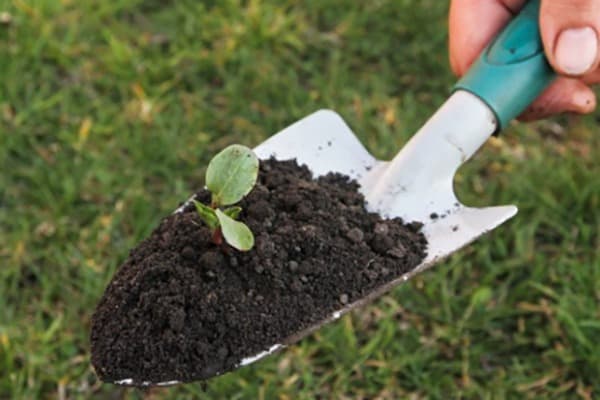A ručna lopatica može se činiti kao jednostavan alat, ali igra važnu ulogu u vrtlarstvu, građevinarstvu, pa čak i arheologiji. Njegova kompaktna veličina i svestrani dizajn čine ga nezaobilaznim i za profesionalce i za hobiste. Iako mnogi ljudi lopatice povezuju samo s vrtlarstvom, njihova se upotreba proteže daleko izvan sadnje cvijeća. Dakle, za što se točno koristi ručna lopatica i zašto se smatra jednim od najpraktičnijih alata?
Što je a Ručna lopatica?
Ručna lopatica mali je ručni alat sa šiljastom oštricom u obliku lopatice pričvršćenom za dršku, obično izrađenu od drva, plastike ili gume radi čvrstog držanja. Podsjeća na minijaturnu lopatu i dizajniran je za kopanje, grabljenje, glačanje ili razbacivanje materijala. Zbog svoje veličine, lopatica omogućuje precizan rad u područjima gdje su veći alati nepraktični.

Primarna upotreba u vrtlarstvu
Jedna od najčešćih upotreba ručne lopatice je u vrtlarstvu. Vrtlari se oslanjaju na njega za širok raspon zadataka, uključujući:
-
Sadnja i presađivanje – Lopatica olakšava kopanje malih rupa za sjeme, lukovice ili mlade biljke. Njegova veličina omogućuje precizno postavljanje bez ometanja okolnog tla.
-
Plijevljenje – Uska oštrica lopatice savršena je za rahljenje zemlje oko korova i njihovo uklanjanje iz korijena. To pomaže u sprječavanju ponovnog rasta i održava vrtove zdravima.
-
Miješanje tla i gnojidba – Lopatice su praktične za miješanje komposta, gnojiva ili zemlje za posude u vrtne gredice ili posude.
-
Vrtlarstvo u kontejnerima – Za biljke u posudama, ručna lopatica idealne je veličine za dodavanje ili uklanjanje zemlje, presađivanje biljaka ili podešavanje korijenskog sustava bez pravljenja nereda.
Upotreba u građevinarstvu i zidanju
Izvan vrtlarstva, ručne lopatice neophodne su u građevinarstvu, posebno u zidarstvu. U tom kontekstu, oštrica je obično ravna ili blago zakrivljena za rukovanje mortom ili žbukom. Uobičajene upotrebe uključuju:
-
Nanošenje morta – Lopatica pomaže zidarima u nanošenju i oblikovanju morta prilikom postavljanja cigle ili kamena.
-
Zaglađivanje površina – Koristi se za izravnavanje i glačanje površina poput betona ili žbuke.
-
Popravci – Ručne lopatice savršene su za krpanje malih pukotina, popunjavanje praznina i izvođenje detaljnih radova gdje bi veći alati bili nespretni.
Arheološke primjene
U arheologiji je ručna žlica kultni alat. Arheolozi koriste specijalizirane žlice, često trokutastog oblika, kako bi pažljivo uklonili zemlju i otkrili osjetljive artefakte. Preciznost je ključna pri iskapanju, a ručna lopatica omogućuje stručnjacima da kopaju bez oštećenja lomljivih predmeta.
Druge praktične upotrebe
Ručne lopatice također mogu poslužiti u mnoge manje, svakodnevne svrhe:
-
Kampiranje i aktivnosti na otvorenom – Lagane lopatice često su uključene u komplete za kampiranje za kopanje ložišta, zahoda ili rovova.
-
Detektiranje metala i potraga za blagom – Entuzijasti ih koriste za pažljivo iskopavanje novčića, relikvija i drugih sitnih nalaza bez nanošenja štete.
-
DIY kućni projekti – Bilo da se radi o miješanju fugirne mase za pločice ili nanošenju špaklova, lopatica će vam dobro doći u kući.
Zašto je ručna lopatica ključna
Važnost ručne lopatice leži u njenoj svestranosti. Za razliku od velikih lopata ili složenih strojeva, lopatica pruža kontrolu i preciznost. Lagan je, prenosiv i jednostavan za korištenje, što ga čini praktičnim alatom za svakodnevno vrtlarenje i specijalizirane profesionalne zadatke.
Zaključak
A ručna lopatica daleko je više od male lopate. Od vrtlarstva i zidarstva do arheologije i aktivnosti na otvorenom, dokazuje svoju vrijednost u bezbrojnim situacijama. Bilo da sadite cvijeće, postavljate cigle ili otkrivate povijest, ovaj jednostavan alat nudi preciznost i kontrolu potrebnu za obavljanje posla.
Sljedeći put kad vidite ručnu lopaticu, zapamtite - ona nije samo za kopanje rupa; to je jedan od najsvestranijih alata koje možete posjedovati.
Vrijeme objave: 25. rujna 2025






